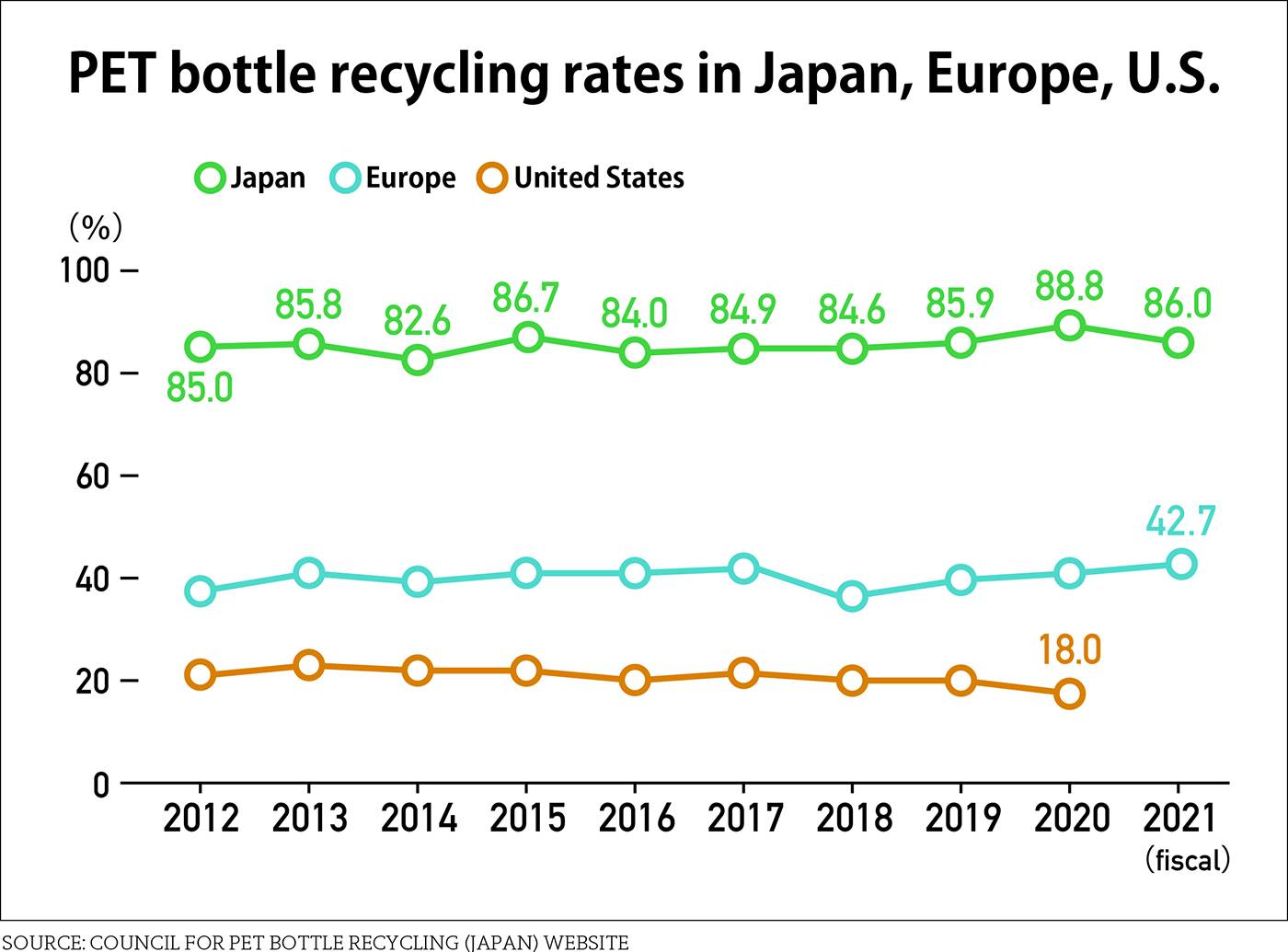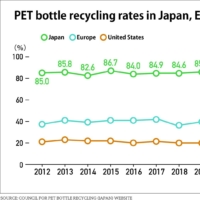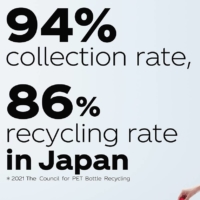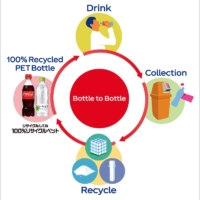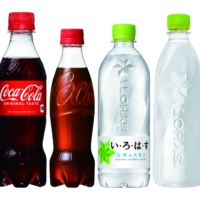The Japanese have long embraced the need to protect and preserve the natural world, safeguarding our shared environment for generations to come. As a nation, the Japanese have been ahead of the game when it comes to initiatives such as recycling to conserve finite stocks of resources, helping to tackle the plastic waste crisis and, at the same time, reducing emissions that can harm our delicate global ecosystem.
Japan is particularly seen as a world leader when it comes to its recycling rate for bottles made from polyethylene terephthalate bottles, which is significantly higher than all other advanced economies.
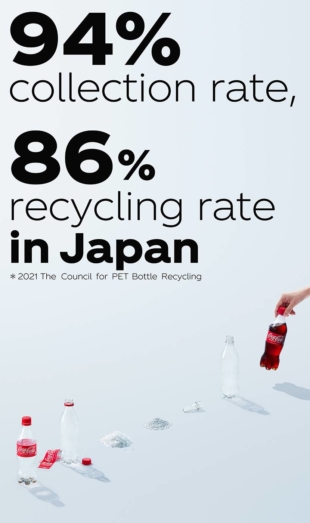
According to The Council for PET Bottle Recycling, 94% of all PET bottles purchased in Japan in 2022 were collected and 86% of that total were recycled. In comparison, the recycling rate was just 42.7% in Europe in the same year and even lower in the United States, with the figure in 2020 only reaching 18%.
Yet Japan also realizes that more needs to be done to reduce the impact of many years of neglect of our planet.
Coca-Cola’s recycling efforts also tie in neatly with the Japanese government’s campaign to achieve net-zero in domestic greenhouse gas (GHG) emissions by 2050. The initiative calls on the national government to work with local authorities, companies and the public to do more to protect the environment. A key part of that drive will be recycling PET bottles.
Coca-Cola shares those beliefs and attitudes and is committed to playing its part through its “World Without Waste” initiative, with Chairman and CEO James Quincey detailing a plan as far back as 2018 for the company to work with partners and consumers to ramp up recycling efforts.
“Customers around the world care about our planet, and they want and expect companies to take action,” Quincey said. “That’s exactly what we’re going to do, and we invite others to join us on this critical journey.”
Coca-Cola’s most recent report on business and environmental, social and governance issues points out that the global plastic waste crisis requires cross-sector collaboration and states that industry needs to be aligned on common principles and targets.
The company’s World Without Waste program has three fundamental goals. The first is to make 100% of Coca-Cola’s packaging recyclable globally by 2025 and to use at least 50% recycled material in packaging by 2030. The second target is to collect and recycle a bottle and can for each one that Coca-Cola sells by 2030. The third goal is to bring people together to support a healthy, debris-free environment.
Thinking, acting horizontally
Coca-Cola Japan has implemented a series of initiatives to help reduce the burden on our planet. A critical component of this vision is “horizontal recycling,” or the so-called bottle-to-bottle recycling of one PET bottle into another for Coca-Cola products.
When this is achieved, PET bottles will become a self-regenerating resource on a semi-permanent basis, eliminating the need for additional petroleum-based materials that are required in the original fabrication process. As an added benefit, less plastic waste will end up in the world’s oceans. For Japan, which relies on imports for much of its oil, this is extremely important in terms of effective use of resources.
PET bottles are made of a single material and are easy to recycle if collected in clean condition. However, because of this, they are now often recycled into other products, such as textiles and food trays, which are then incinerated. Raising the bottle-to-bottle rate will be a more efficient use of resources while simultaneously reducing the amount of plastic waste.
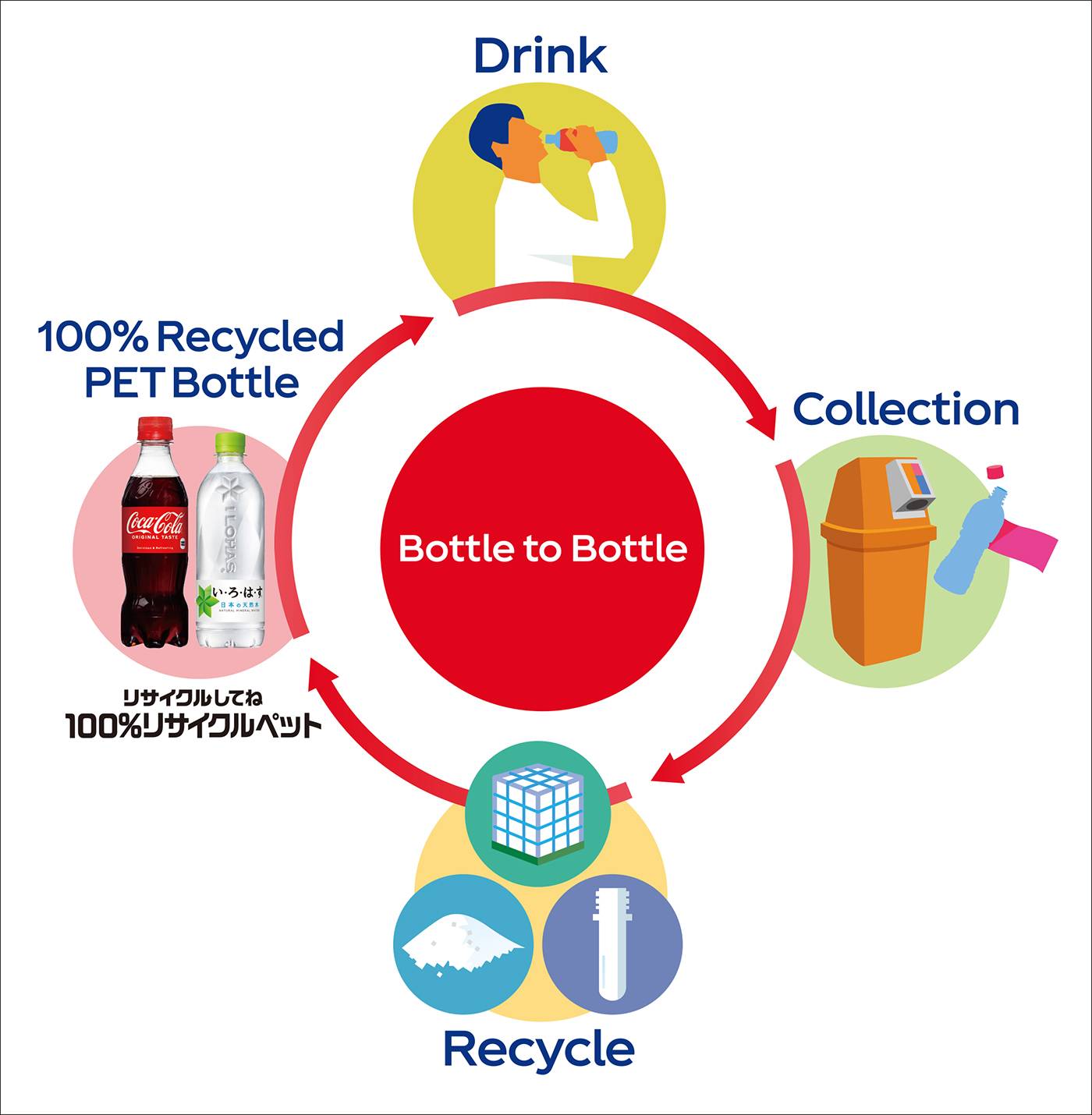
Coca-Cola’s bottle-to-bottle journey started in 2018. Back then, approximately 17% of Coca-Cola PET bottles sold in Japan utilized recycled materials, transforming them into recycled PET (rPET) bottles. After the expansion of bottle-to-bottle recycling in the following years, the rate of recycled materials in PET bottles among all Coca-Cola products in Japan reached 50% in the first quarter of 2022.
That achievement puts the company on course to meet its objective of recycling that is so comprehensive that it requires zero new fossil fuel inputs to manufacture PET bottles in Japan by 2030.
Coca-Cola Japan has long been a pioneer when it comes to recycling, initially introducing 100% rPET bottles for its mineral water brand I Lohas in 2020, followed by such well-known names as Coca-Cola and Georgia coffee in 2021. As of 2023, the number of products packaged in 100% rPET bottles has risen to 44 across four brands.
Yet another merit to horizontal recycling is that 100% rPET bottles lead to 60% fewer GHG emissions into our atmosphere than conventional PET bottles newly made from petroleum-based materials.
The effectiveness of this multipronged approach also assists in the transition to a low-carbon economy. Packaging accounts for almost one-third of Coca-Cola’s scope 3 carbon footprint in Japan, meaning that virtually every measure the company takes to tackle the plastic waste crisis also helps it achieve the net-zero target.
Despite all its efforts, Coca-Cola recognizes that it cannot do it all alone and is proactively reaching out to its consumers through a number of efforts, including its “Recycle Me Again” slogan. To encourage consumers to recycle its packaging, this common logo is currently stamped on almost all Coca-Cola products sold in Japan.
Do more for less
Coca-Cola used to be served in a glass bottle that was heavy and bulky. As the company has set about its mission to refresh the world and make a difference, it has also adopted new technologies to dramatically reduce the amount of materials that go into its packaging, while still ensuring the contents are in perfect condition when the cap is unscrewed.
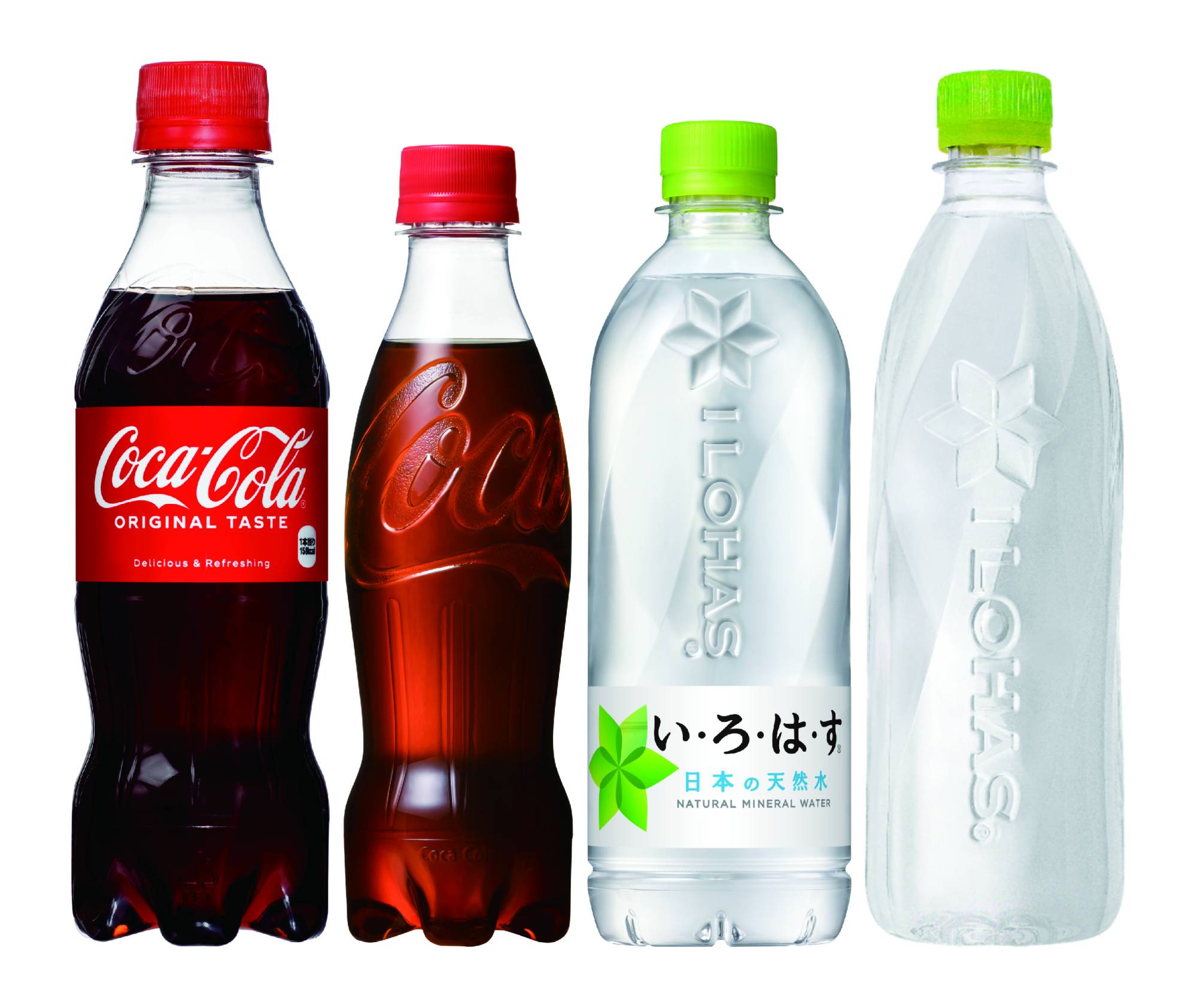
A 555-milliliter PET bottle for mineral water that was launched in 1996 was reduced to 12 grams in 2009, making it the lightest in Japan at the time. Later, one of the first initiatives unique to the Japan market was packaging for I Lohas mineral water. The bottles could easily be crushed in the hand when it was empty, reducing the amount of waste that was thrown away.
“I think it is fair to say that this innovation was one of the major factors that helped to establish the recycling of plastic bottles in Japan,” said Miyoko Tanaka, head of public affairs, communications and sustainability at Coca-Cola Japan.
I Lohas was also the first Coca-Cola brand in the world to launch the revolutionary label-less look, while also switching to 100% rPET bottles in 2022.
Instead of sticky labels attached to the exterior of bottles, the company has started designing packaging that incorporates the name of the product and other artistic features into the shape of the bottle itself. For I Lohas, that includes the name of the drink and the familiar windmill star.
In 2022, the iconic Coca-Cola brand also went label-less with a 100% rPET bottle.
“The reaction from consumers to our initiatives has been extremely positive,” Tanaka said. “Many people say it has become far easier to recycle and can contribute to reducing plastic waste.”
As of 2023, no fewer than 21 products from 10 brands have adopted label-less bottles in Japan, with consumers welcoming the out-of-the-box thinking because it cuts waste and does away with the need to remove labels when a bottle is disposed of for recycling. The experiment has proved so successful that the same approach has been adopted in South Korea and China.
Bottle technology continues to evolve as well, with Coca-Cola making strides in lightening its PET bottles. Recently, the 700-milliliter Coke bottle dropped from 42 grams to just 27 grams, and the 265-milliliter Costa Coffee bottle went from 29.5 grams to 18.5 grams.
Furthermore, in 2022, the company improved on the design of I Lohas PET bottles by making the walls even thinner and implementing a new design that makes it easy to crush flat when empty. The result is that the bottle is around 20% smaller when crushed than previously, helping consumers to recycle more easily.
The importance of partners
Coca-Cola Japan is acutely aware that its own recycling efforts are greatly enhanced when it works closely with partners, whether they be consumers, other corporations or local authorities across the country. And the company’s initiatives benefit greatly from the fact that the majority of Japanese already recognize the importance of the mantra of “reduce, recycle and reuse.”
With this in mind, Coca-Cola Bottlers Japan has signed horizontal recycling agreements with a number of local governments around the country in the last two years, including Moriyama in Shiga Prefecture, Zama and Ebina in Kanagawa Prefecture, and Kuki and Yoshimi in Saitama Prefecture. The company is also working with private-sector companies, such as Seven & i Holdings, Mori Building and Welcia Holdings, to collect PET bottles. Under these initiatives, used bottles are collected throughout local communities to be transformed into new bottles for Coca-Cola products.
The company is also a strong supporter of the Japan Soft Drink Association, which has set a target of 50% for horizontally recycled PET bottles by 2030. The association and Coca-Cola are stepping up efforts to gather used PET bottles at dedicated recycling bins located alongside vending machines.
Coca-Cola Japan is also promoting awareness campaigns, both against littering and in favor of recycling. It is a participant in the Plastic Circular Challenge 2025, set up by the World Wide Fund for Nature Japan to promote the switch to recyclable materials for all product packaging sold in Japan by 2025.
Focus on recycling
Coca-Cola Japan is working hard with consumers, partner companies, local authorities and like-minded organizations to increase the collection and recycling of PET bottles. These initiatives are positive business strategies that simultaneously help to protect our environment.
Coca-Cola is committed to creating a better shared future and to making positive differences in people’s lives.
This page is sponsored by Coca-Cola Japan.
Download the PDF of this special



